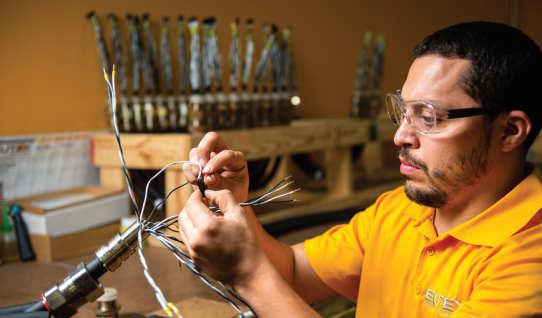
2 minute read
Tackling cancer risk
Reducing the risk
There is growing recognition of the risks to firefighters of occupational cancer. Raising awareness, training in good work practices as well as appropriate use and decontamination of PPE are critical.
There is a growing awareness of the links between cancer and firefighting, with the International Association of Firefighters (IAFF) claiming that occupational cancer claims the lives of more firefighters than any other work-related hazard. University of Central Lancashire (UCLAN) research has found that firefighters are four times more likely to have been diagnosed with cancer than the general population.
In July 2022, the International Agency for Research on Cancer (IARC), the cancer agency of the World Health Organization (WHO) re-classified firefighter occupational exposure as a Group 1 carcinogen, the cancers identified in relation to this reclassification including mesothelioma and bladder cancer. This is likely to have a major impact on the fight against firefighter cancer, from medical research to presumptive laws.
Firefighters are increasingly exposed to carcinogenic substances and toxic contaminants from fires. Not only is there a danger to firefighters themselves from breathing in or ingesting these substances, getting them on their skin or in their eyes, there are dangers that arise from reusing or coming into contact with contaminated clothing or PPE that has not been correctly cleaned and stored. This can also contaminate vehicles and fire stations.
The USA’s NIOSH comments, “It is important for the Fire Service to educate its members about safe work practice. Sound work practices are designed to reduce exposures to hazardous agents, which is key to reducing occupational illnesses, including cancer. Training should emphasis the proper use and care of PPE and turnout gear, and the proper use of approved respiratory protection during all phases of firefighting.”
Measures should include fully documenting all fire or chemical exposures; wearing appropriate and correctly-fitting PPE; proper removal of PPE to avoid contamination transfer; robust cleaning and disinfection of PPE; changing out of contaminated gear and taking a shower as soon as possible after exposure.
In the USA, a new app has been launched to help North Carolina firefighters track their exposure to carcinogens while on the job, and a National Firefighter Registry (NFR) of active and former firefighters has been created, with the goal of understanding and reducing cancer in the US Fire Service.
In the UK, the Fire Brigades Union (FBU) has led on research into the links between cancer and firefighting, and best practice that can help mitigate the potential risks from fire contaminants. This includes compiling a Firefighters Cancer and Diseases Registry, and using that research to produce best practice training for firefighters, as well as video training for firefighters to help protect themselves and their families from fire contaminants. Riccardo Favara, global head of personal protective equipment division at German machine builder Meiko comments, “With our international customers, we see that the topic of decontamination is rapidly gaining relevance. This term is increasingly penetrating the consciousness of firefighters themselves and also of professional organisations.”
Meiko has created equipment and robust processes for cleaning and disinfecting respiratory equipment. TopClean D, a specialised washer for the mechanical pre-cleaning of PPE, decontaminates and cleans breathing apparatus equipment thoroughly, to protect firefighters from residual fire-related toxins. ■










